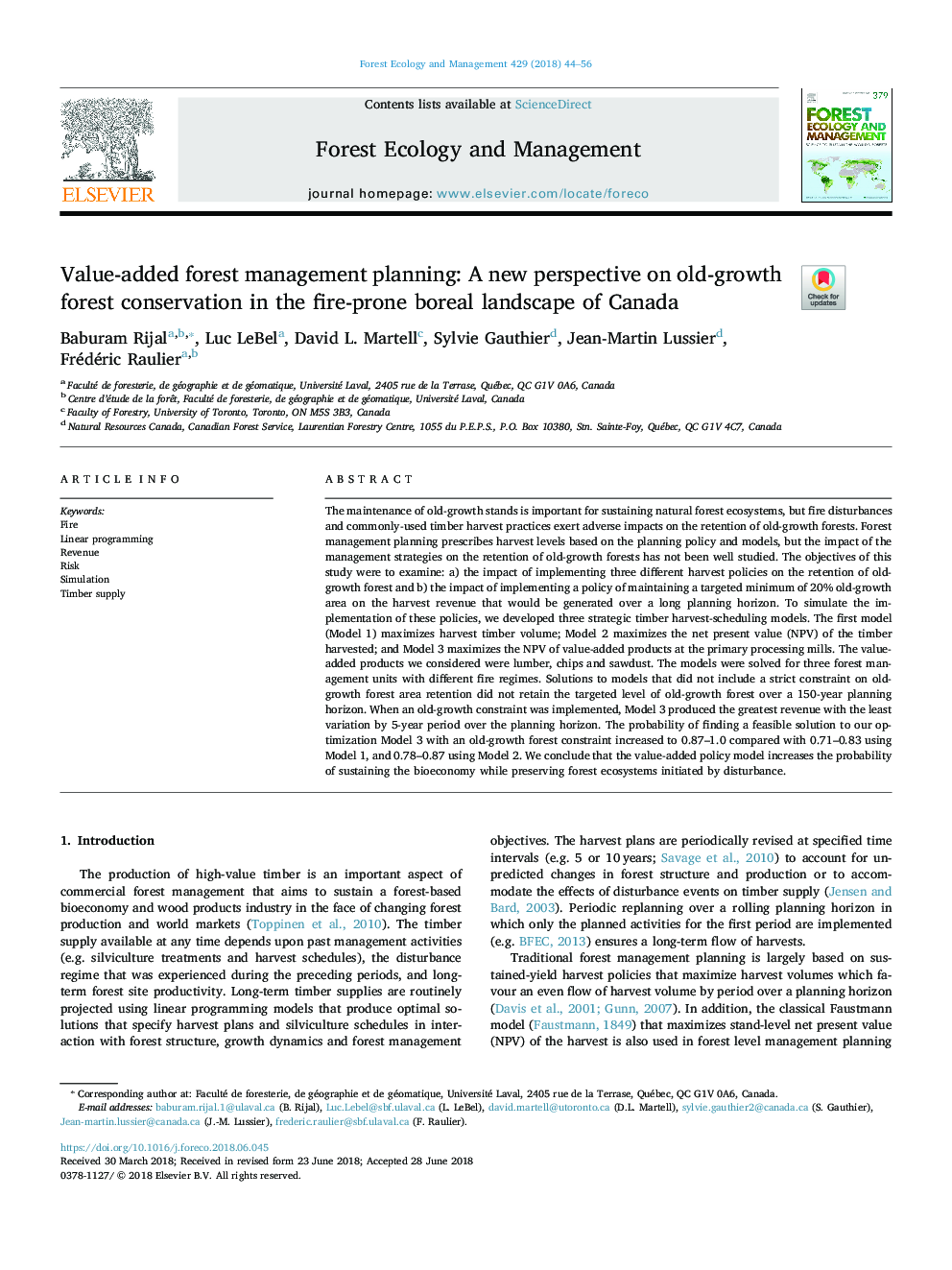| Article ID | Journal | Published Year | Pages | File Type |
|---|---|---|---|---|
| 6541417 | Forest Ecology and Management | 2018 | 13 Pages |
Abstract
The maintenance of old-growth stands is important for sustaining natural forest ecosystems, but fire disturbances and commonly-used timber harvest practices exert adverse impacts on the retention of old-growth forests. Forest management planning prescribes harvest levels based on the planning policy and models, but the impact of the management strategies on the retention of old-growth forests has not been well studied. The objectives of this study were to examine: a) the impact of implementing three different harvest policies on the retention of old-growth forest and b) the impact of implementing a policy of maintaining a targeted minimum of 20% old-growth area on the harvest revenue that would be generated over a long planning horizon. To simulate the implementation of these policies, we developed three strategic timber harvest-scheduling models. The first model (Model 1) maximizes harvest timber volume; Model 2 maximizes the net present value (NPV) of the timber harvested; and Model 3 maximizes the NPV of value-added products at the primary processing mills. The value-added products we considered were lumber, chips and sawdust. The models were solved for three forest management units with different fire regimes. Solutions to models that did not include a strict constraint on old-growth forest area retention did not retain the targeted level of old-growth forest over a 150-year planning horizon. When an old-growth constraint was implemented, Model 3 produced the greatest revenue with the least variation by 5-year period over the planning horizon. The probability of finding a feasible solution to our optimization Model 3 with an old-growth forest constraint increased to 0.87-1.0 compared with 0.71-0.83 using Model 1, and 0.78-0.87 using Model 2. We conclude that the value-added policy model increases the probability of sustaining the bioeconomy while preserving forest ecosystems initiated by disturbance.
Related Topics
Life Sciences
Agricultural and Biological Sciences
Ecology, Evolution, Behavior and Systematics
Authors
Baburam Rijal, Luc LeBel, David L. Martell, Sylvie Gauthier, Jean-Martin Lussier, Frédéric Raulier,
